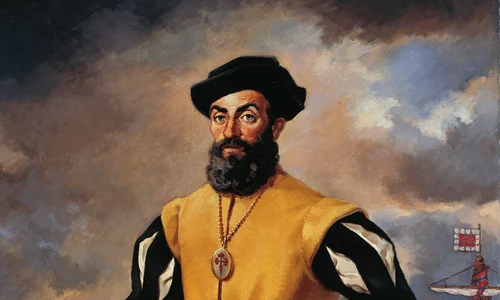
Fascism – Dictatorial Power
Initially, the Great War seemed like a triumph of democracy over the fall of the great militaristic and traditional European empires which were replaced with parliamentary republics. However, the consequences of the war and the Great Depression of 1929 created new political forces. Two of these forces were Communism-after the October Revolution of 1917, it aimed at overthrowing governments in favour of a dictatorship of the proletariat-and Fascism[1].
The Fascist doctrine was firmly opposed to the Communist and Democratic beliefs. The Reactionaries and the great landlords used it frequently as protection against Communism, yet it was more than a conservative movement. Similar to the Communist states, the Fascist countries were dictatorships governed by one party which did not approve of any kind of opposition. At the top, there was a very powerful and glorious leader.
The Power of Fascism
The Fascists managed to confiscate and to control the power by mobilizing the masses with the aid of modern organizational and propaganda techniques. Fascists placed utmost importance on the nation’s fundamental virtues of submission and self-sacrifice as well as on the war which was the ultimate proof of a people’s greatness.
The Fascist state had a military character:uniforms were worn by virtually everybody-the soldiers, members of the party, policemen and members of the youth organizations[2].
The Black Shirts
Broadly speaking, Fascism meant a group of similar movements which were entitled differently. The word Fascist comes from an ex Italian Socialist – Benito Mussolini. In March 1919, he created an organization under the name of "Fasci di Combattimenti" which became at a later date the Fascist Party. Fascis (plural-Fasces) is a Latin word which describes the old Roman symbol of authority:a bound bundle of wooden rods with an axe.
In its ascension to power, Fascism exploited Italy’s dissatisfaction with the outcome of the Great War[3]. Italy fought on the winning side, yet, at the Peace Conference, it was not awarded all the territories it desired. Maybe this would not have had such a great importance, if the country came back to a normal state after the war. However, the postwar period was tense and restless. Therefore, dressed in their black attire, the Fascists promised to restore order. Yet, they managed to weaken the authority of the state by their systematic attacks and the overthrowing of the leftist authorities of certain Italian cities. This technique became a classic and it was later used by other Fascist parties as well.
Use of Terror
The Fascists used the method mentioned above, because their parties never managed to achieve a majority in free elections. Yet, their success was based on a self-created irresistible image, the systematic use of terror against the Communists and the weakening of people’s confidence in the legal authorities. Mussolini himself demonstrated all this in his famous March on Rome of May 1921. The march did not possess a war like character, yet it symbolized Fascist power. The outcome of this action was that Mussolini managed to become the Italian prime-minister[4].
Initially, Mussolini was simply ruling over a party coalition, yet he gradually managed to silence every form of opposition until 1928 when he became known as Il Duce – the Leader. Mussolini was then the sole ruler of a single party state. However, during that time, many Europeans were impressed by Mussolini’s drive to restore order and to bring about a sense of pride and new aims for the Italian people.
But it was an illusion as well as the apparent great power of the Italian state which was staged by public demonstrations and Mussolini’s powerful personality. The reality of the Italian state was less glamorous:it was a relatively poor country hardly hit by the Great Depression. Despite of the condition of the Italian state, Mussolini decided to launch in 1930 an expansionist policy. It brought Ethiopia and Albania to Rome as well as the status of ally to Hitler in the Second World War[5].
Mussolini’s party inspired the creation of the NSDAP that managed to ascend to power in 1933 by similar methods. However, Hitler’s fanatical racial vision was in sharp contrast to the Italian Fascist movement. During the 1930s, Hitler’s Germany followed a hardline expansionist policy which led, eventually, to the World War 2.
The March comes to an end
In 1930, the end of the Fascist movement could not have been foreseen when Mussolini declared the 20thcentury the “Fascist era”. Germany, Italy and Imperial Japan were the leading actors in the International Relations. Although Japan’s actions were not actually of Fascist character, Tokyo’s good relationships with Germany and Italy determined its membership in the Axis. Fascist parties spread all over Europe including the UK with its British Union of Fascists led by Sir Oswald Mosley and France where the “Action Francaise” was created. Fascist-inspired regimes were established in Portugal, Austria, Greece and Romania as well as in Brazil and Argentina[6].
Irrespective of being influenced by Fascism or not, dictatorships replaced democratic systems in many countries across Europe. In 1936, Francisco Franco and the Spanish Generals staged a revolution based on the Falange (Phalanx – Spanish Fascist party) and on the forces of the right including the Church. Idealistic individuals from all over the world came to Spain to help the Spanish Republic win the civil war, however, Germany and Italy sent military and material aid to Franco’s nationalists. He won the war after a three-year bloody and savage battle. Franco was wise enough not to engage his country in the WW2 and thus, he remained the dictator of Spain. Until his death in 1975, he governed in a rather traditional than Fascist way[7].
At that particular time, the Spanish Civil War seemed like a disastrous defeat of democracy in the face of Fascism. However, when the Civil War ended in March 1939, another conflict, even bloodier, was looming on the horizon.
[1]Jean-Claude Lescure, Fascism and Nazism, Editura Institutul European, Iași, 2002, p. 30
[2]Stephane Courtois, Such a long night:The peak of the totalitarian regimes in Europe (1935-1953), Editura Vremea, București, 2008, pp. 233-244.
[3]Ibidem, pp. 334-350.
[4]Ibidem, pp. 350-356.
[5]Heinrich Hoffmann, Hitler was my friend, Editura Corint, București, 2013, pp. 154-167
[6]Bogdan Teodorescu, Five Millennia of Manipulation, Editura Tritonic, București, 2007, pp. 300-305.
[7]Imanuel Geiss, The History of the World, From Prehistory until Today, Editura Alfa All, București, 2012, pp. 420-430.



















